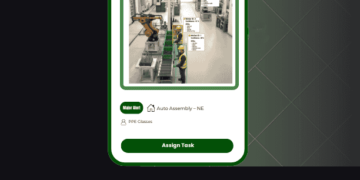In the world of customer service, every second counts. Whether it’s a potential customer asking a question or a long-time client facing an issue, how quickly we respond can make or break their experience. In Business Process Outsourcing (BPO), this becomes even more critical. Customer Satisfaction in BPO hinges on efficiency, clarity, and speed—and one of the most overlooked but powerful tools to measure and improve this is the Response Time Report.
At its core, a Response Time Report provides a comprehensive view of how long it takes to respond to customer queries across channels—be it voice calls, emails, chats, or social media. For organizations that are constantly striving to enhance service levels, this report is more than just a set of metrics; it’s a mirror that reflects our team’s agility and attentiveness.
The Correlation Between Response Time and Customer Expectations
In today’s digital-first era, customers expect immediate attention. When their expectations are not met, dissatisfaction grows—often silently, until it shows up as a bad review, a complaint, or worse, lost business. We’ve seen that reducing the average response time by even a few minutes can create a significant uptick in customer satisfaction levels.
Response Time Reports allow us to track key metrics like:
- First Response Time (FRT): How long does it take for a customer to get an initial response?
- Average Handling Time (AHT): How long do agents take to resolve the query?
- Channel-Specific Delays: Which platforms are causing lags in response?
By consistently analyzing this data, we can identify bottlenecks, inefficient processes, or even training needs within our teams.
Enhancing Accountability and Team Performance
The visibility that Response Time Reports offer enables better accountability within customer service teams. When team members know that their response times are being monitored and benchmarked, there is a natural drive to improve. This doesn’t mean putting pressure on employees to rush through conversations, but rather encouraging thoughtful efficiency.
We’ve found that using this data to celebrate top performers and identify coaching opportunities also boosts morale. Agents who respond swiftly and resolve issues efficiently tend to feel more confident, and customers, in turn, feel more valued.
Moreover, when service teams know where delays are happening—whether during peak hours or due to specific queries—they can take proactive steps to address these challenges.
Strategic Improvements Based on Response Trends
Data-driven decisions are always better than assumptions. Response Time Reports help us make strategic improvements grounded in real behavior patterns. For example, if we observe that chat queries have a consistently faster response time than email, we might choose to guide customers toward using chat support during busy hours.
Or perhaps we notice that queries regarding billing take longer to resolve. That’s a sign to streamline billing support documentation or provide additional training to agents.
It’s these micro-adjustments, made possible through response analysis, that create a macro impact on the overall customer experience.
Multi-Channel Insights Lead to Omnichannel Excellence
Modern customers don’t stick to one channel. They might start with a chatbot, move to a social media post, and finally call the helpline. This omnichannel journey makes it crucial to track response time across all platforms—not just one.
We use Response Time Reports to maintain consistency in service levels across all channels. No matter where the customer reaches out, they deserve the same speed and quality of support. This unified experience not only enhances customer satisfaction but also strengthens brand trust.
Over time, we’ve learned that customers may forgive a mistake, but they rarely forgive being ignored. Fast, empathetic responses—regardless of channel—can turn a negative experience into a positive one.
Continuous Improvement Through Historical Data
Another advantage of Response Time Reports is the ability to look back and learn. Historical data helps us identify seasonal trends (like delays during festive periods), team performance evolution, and how past changes in strategy affected customer satisfaction.
This bird’s-eye view is essential for long-term improvement. We regularly revisit these reports during quarterly reviews to tweak processes, plan hiring, or even adjust SLAs (Service Level Agreements).
The report becomes not just a reflection of our performance—but a roadmap for where we want to go.
The Role of Technology in Streamlining Response
With the integration of AI and automation in customer service, technology now plays a significant role in managing response times. Auto-routing queries to the most qualified agents, using canned responses for common issues, and implementing smart chatbots for initial engagement all contribute to better response metrics.
Still, it’s the human touch that ultimately drives customer loyalty. By combining efficient response systems with trained, empathetic agents, we ensure customers feel heard, not just handled.
The Backbone of Customer Support: Call Center Help Desk
At the heart of all these improvements lies a robust Call Center Help Desk system. This is where the actual communication happens, the tickets are created, and the response times are measured. It’s where our teams connect with customers, guided by insights from the very reports we generate.
A well-integrated help desk powered by real-time analytics allows agents to prioritize urgent tickets, follow up on older ones, and collaborate with other departments if needed. It ensures that no customer query falls through the cracks and that our service remains prompt, personalized, and professional.
We believe that in an age of digital convenience, customers still crave one thing above all—attention. The faster we provide it, the more satisfied they are. And when satisfaction becomes consistent, loyalty soon follows.
In conclusion, Response Time Reports aren’t just tools for metrics—they are tools for transformation. They empower us to act faster, serve better, and connect deeper. In the competitive landscape of customer service, they are a key driver of long-term success and enhanced customer satisfaction in BPO environments, made possible through a well-optimized Call Center Help Desk.





















